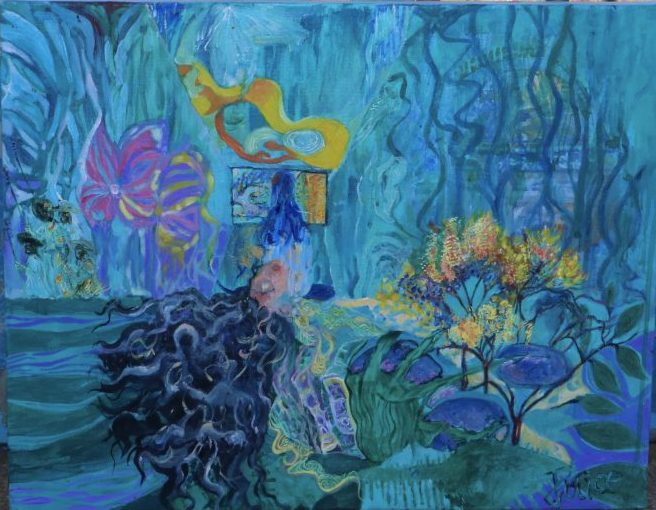AR The Last Grimmer tale Sound Documentation
Welcome back to the last Grimmer tale behind the scene–audio channel! I feel like the blog would be too long so I cut them in half, would would be much clearer to see what we have done so far, and also, being critical to ourselves…
Me and Jingya was doing one foley session on site together, because she was also busy with her final year movie. So we had a lot face time online meetings like this: something like: to consider what kind of sound effects would be suitable for the scene…

Thanks to Dean, the google drive is really helpful in many ways. It keeps our mind clearer. I think two sound people is a very good combination, though a little bit exhausted physically… As we kind of get our roles much more clearer, and you have the straight idea of what you are doing and mainly responsible for… Jingya is a highly professional sound designer, so the communication between us is working so well. Her logic mind is very clear and she is also very careful about every details in a single sound. I would still be up to collaborate with her in the future. We finish our main stuff before the spring holiday cause we have very organised meeting every week. That is also the reason why I find a bit awkward when the VR format is changing to AR format in the last minute…
Realistic sounds



There are animal sounds like wolf and owl we dont have, we use placeholders…Well, Jing ya does find someone to intimate an owl, but it just not feel real enough?! And it is so funny! It could be good if we can go to the zoo…… I think the visual team quite like the idea everything being real and living, so we kind of creative a sound environment like that…I quite not like doing foley, +a bit of ptsd from another group, but doing foley with a friend could be fun.
Unrealistic sounds
There were three SFXs in total with their original version. I am not so sure about now. Jingya is quite stubborn with the idea of doing sfx with a screen based, which I am more freestyle haha. We edit on eachother’s SFXs which is quite fun. In the end we produce 6 sfxs.

Motif
I still remembered it was quite funny when I firstly met the visual people: As they did not expect I could make music for them lol. Well, if I didnt do composition, it would be so sure I would get bored very easily! These are the music references I had looked into: These types of music are so calming and peaceful, it’s like a lullaby for the soul!
Honestly speaking, I find it difficult when the visual people dislike the composition sound electronic or scifish–Cause I am using the vsts, its something could not be changed (If i have more time, I should do real time recordings) I try to add some ambience to make it more natural… It is quite intriguing that they want the music tone in a more hopeful and bright tone and not epic and nothing related to dark ambient… Lol so many indigestions in communications
Organic and Physical Nature: Acoustic instruments have a physical presence and a unique organic quality that adds depth and richness to music. The vibrations of strings, the resonance of a wooden body, or the breath of a wind instrument contribute to the overall sound and create a sense of authenticity. VST instruments, while capable of producing high-quality sounds, lack the physicality and natural vibrations that give acoustic instruments their distinct character.
Expressiveness and Nuance: Skilled musicians can bring a wide range of expression and nuance to their playing, allowing for subtle variations in dynamics, articulation, phrasing, and vibrato. These nuances contribute to the emotional impact and human feel of a musical performance. While VST instruments can mimic some of these elements, they often struggle to reproduce the same level of intricacy and sensitivity that can be achieved with a real instrument played by a skilled performer.
Interaction and Performative Elements: Acoustic instruments require physical interaction, such as finger movements on a piano or guitar, breath control for wind instruments, or bowing techniques for string instruments. These interactions influence the sound produced and allow for real-time adjustments and improvisation. In contrast, using VST instruments often involves sequencing and programming notes in a digital environment, which can limit the spontaneity and improvisational possibilities inherent in live performances.
https://www.fmod.com/blog/sky-children-of-the-light-interview












The video is so last minute!!! And I did not know until they have uploaded the video!!! Dont let visual people do sounds TaT They did not used the final version of the composition I had sent to them, but never mind, I will remix it later~
Dialogues
I feel quite regretful I did not take the control of recording this: we will have higher standard recordings… I mean most of them are fine to work with, there are bits look like recording using an iphone, and there are bits with a cant help handy noise…(The frequency of the voice is sticking with the handy noise, which the izotope cant be helpful sometimes)But there are also issues like how they can find these voice actors, some of them would be suitable like 4-5 years old, and the main characters feel like older people. The visual people want me to differ the dialogue into two styles, one realistic (remove noises+EQ), one with a memory effect on it (Wet Delay+echo+reverb)


Overall Sound Script
